Search Results for Tag: Polar night
Locked up with deep-breathing krill
This morning started with a kind of international incident. My fellow Brit Carl Ballantyne and I were horrified to see our expedition leader Stig put sugar on his black pudding at breakfast. These trips are, of course, very international. With scientists from Norway, Russia, Poland, the UK, Germany and other countries on board, there is plenty of scope for “intercultural exchange”, although I still prefer my black pudding straight and spicy.
In between times, I found myself earning my passage on the Helmer Hanssen, working briefly – believe it or not – in the fridge with a load of krill! As the scientists work in shifts through the night and sleep when they get a chance, Carl was having trouble finding an assistant to help him note down his hourly measurements. He is monitoring the respiration of krill samples. So I found myself putting on a head torch and going into the dark fridge with a list and a pencil.
Carl is checking the respiration of certain species, mainly krill. They are living in little bottles of sea water. He puts a tube in to measure how much oxygen they are consuming, the figure appears on the computer and gets entered by hand in a notebook. That was my job. So what is this all about, I wanted to know. Again, it is all about finding out what creatures are up to in the water during these dark winter months. In summer, there is lots of respiration, Carl tells me, compared to winter. It has generally been assumed that since it’s colder and darker and there is not much phytoplankton for them to eat, they will not be feeding and so not using up much energy, which shows in the respiration. But now scientists have found that even at this time of year they are migrating vertically, that is moving up and down in the water column, so they must be using energy. Carl and co. want to find out more. Again, this is an area where not much research has been carried out in winter until fairly recently. These people really have the chance to find out things nobody knew before. Fascinating. And the iceblogger had the chance to make a tiny contribution!
Food and sex in Svalbard’s icy waters?
This is my first post from the Polar Marine Night expedition, from the Kongsfjord in Svalbard.
On the flight from Oslo to Longyearbyen, the main settlement on the island, after a period with a beautiful sunset red strip in the sky, it was dark by half past midday and I realized I had seen my last sunrays for this week.
Flying in to Longyearbyen airport, I could see a white mountain, its dark silhouette outlined by the airport lights. Having been here before in the summer sun, I realized somewhere up there was the famous seed vault where safe supplies of seeds for the world’s food crops are stored under the permafrost, supposedly safe from wars or some other disastrous calamities which might require a “new start” for humanity. I was fortunate enough to visit it on a previous trip a couple of years ago. At the moment, though, the darkness reveals very little of the fascinating landscape.
New winter visitors to Ny Alesund
Our small, robust propeller plane carrying scientists and service staff from the research station, one fellow journalist as well as two young German scientists joining the scientific cruise had us in Ny Alesund late afternoon. It was strange to see the station completely in the dark, although it is not as deserted as it once was in winter, thanks to this Polar Night research. As our driver told us on the way to the harbour, (nothing is far from anywhere else in the small settlement, but hauling luggage across slippery snow and ice in the dark is something I can do without) there are around 60 people on the base, whereas once there was only a skeleton crew of around 13 over the winter.
The French-German station, the Norwegian station and the Chinese building are manned throughout the winter. The others are summer-only stations. Different scientists from around the globe come in and out for the boat trips to investigate marine life in the polar night. This is only the second year of this heightened interest in life in the dark season up here.
Select company of hardy researchers
The RV Helmer Hanssen – named after Amundsen’s navigator to the South Pole – was waiting at the quay. Built as an ice-going fishing vessel, these days the only trawling done here is in the interests of science. Since we left this evening, nets have been deployed at different levels at regular intervals bringing samples of Arctic sea life on board and into the labs. There are 16 students and professors on board, with a crew of 12 to operate the ship, round the clock. It’s an expensive business, says Stig, so they have to make maximum use of the ship time by working to a busy schedule, sleeping in shifts in between. Well, at least we have enough bunks, so we don’t have to economise by sharing those.
Nocturnal goings-on
If I hadn’t done my homework, there were times during the evening briefing by Stig and his colleague Paul Renault, when I might have been tempted to call for an interpreter , with talk of pelagic trawls, the hyper-benthos, grabs, diel vertical migration, epibenthic sleds and more of that ilk. Then comes the high-tech LOPC – a laser optical plankton counter, of course! In case you are not a marine biologist yourself, this is all about getting samples from different layers of water and the seabed to find out about the relatively unknown winter lifestyles and behavior of organisms living in the Arctic ocean. (There was some discussion about supplies of ethanol and formaldehyde, which you must not run out of if you want to take some samples home as a souvenir). It seems amazing, but there is still very little known about marine life in the polar night, because the region was so remote and inaccessible, and because people assumed where there was no light, there would be no biological activity. Now our scientists have discovered (last year was a real “eye-opener”, says Stig) that there is all sorts of activity going on.
It does not surprise me personally that a lot of creatures have to feed all the year round. But what exactly do cod, for example eat? That’s what Marine Cusa wants to find out for her PhD. I met her in the lab, where she was dissecting fish. I had a look inside the stomach of a large specimen of Atlantic cod in the lab.
Not for the faint-hearted, so I won’t go into details. There are even creatures up here who choose to reproduce in this dark season. Now presumably it’s not like with human beings, where there tends to be a rise in the birth-rate after major power cuts in some places. So why would sea creatures choose to have their young in the cold, dark, polar winter? Some of the experts here have some theories – but I’m going to save that for another day.
Snow delays? In Norway?
Norway is one place that generally has no problem with a bit of snow, but my flight from Oslo to Longyearben on Svalbard is indeed delayed because of snow. There seems to be a queue at the de-icing stand. I am hoping there will be no problems catching the next little plane up to Ny Alesund. But as it is a fairly special flight, I am hoping the pilot and my Polar Night colleagues already in Longyearben will wait for me.
As I struggled to get out of bed early on a cold, snowy morning, I imagined what it must be like to live in the High Arctic and have a few months without any light at all. Tough going! But there is also something absolutely beautiful about snow in moonlight and starlight.
I am looking forward to seeing Ny Alesund again, although I know it will be very different in the dark. In summer, of course, it is light all year round. The weather seems to be fairly changeable. A colleague in Tromso (where I shall be heading after the scientific boat expedition) tells me there are some areas with no snow cover and others close by covered by snow drifts. “Pack for everything”, he said, and be prepared for a VERY cold spell on the horizon.
A fellow passenger told me he had been evacuated from a ship at Trondheim, because of gale force winds, force 12. So I am wondering what conditions will be like for our ship, the RV Helmer Hanssen, when it leaves Ny Alesund later today.
Meanwhile, when I left Germany yesterday, I saw hazel bushes in bloom. I reminded myself this is January. But of course it comes after the warmest year on record. The climate is changing – and I am headed for the region most affected on the whole planet, warming at around twice the average speed. I’ll keep you posted.
Arctic Ocean: “Mare incognitum”
As I continue to prepare for my trip to Svalbard and the Arctic waters around the archipelago, into the Polar Night, the title of a website strikes me as particularly appropriate: Mare Incognitum is the umbrella title for a group of Arctic research projects, including the one I will be joining this weekend at the harbour of the Arctic research base at Ny Alesund, Spitsbergen. The title was chosen to reflect the group’s view of the Arctic as “one of the least known marine ecosystems of the planet”.
![]() read more
read more
Unlocking secrets of the polar night
During visits to Arctic research sites in summer, I have experienced first-hand the energy and inspiration that comes from around-the-clock light. Who wants to go to sleep with the sun shining at midnight and land, sea and sky awash with changing waves of blue, grey, pink and gold Arctic light?
But what happens up north during the dark winter months? It is hardly surprising that summer is the season when scientists collect most of their data. There is a huge lack of information about Arctic ecosystems during the long polar night.
This is especially the case when it comes to marine ecosystems. Experts at UiT, the Arctic University of Norway, based in Tromsö, are trying hard to make up for that. UiT is the northernmost university of the world. It says its location on the edge of the Arctic defines its mission: to research into the region, which is of increasing global importance. That includes the impacts of climate change, the exploitation of Arctic resources and environmental threats. And that doesn’t stop with the onset of winter.
Investigating polar nightlife
Polar Night Biology is one of UiT’s special research focuses. Until recently, the prevailing view was that the polar night was devoid of biological activity. But this was based on a lack of data and research, say the Tromsö experts. Extreme conditions, with darkness, cold and widespread ice make access much harder and riskier in winter. Some newer research expeditions into the polar night have produced results which challenge our understanding of Arctic marine organisms and ecosystems, say Stig Falk-Petersen, Professor of Arctic and Marine Biology at UiT, and his colleagues. There is plenty of biological activity in the far north of the planet all the year round. We need to understand how the Arctic ecosystem functions in winter if we are to understand the impacts of climate change on it. “Polar-night ecology of Arctic marine systems is a new area of research with the potential for radically altering our fundamental perception of the current state of the Arctic marine ecosystem, mechanisms governing ecosystems processes, and how climate change in the region will affect ecosystem structure and function”, says the UiT website.
So how are warmer air and ocean temperatures and the decline of Arctic sea ice affecting organisms that normally live under it, or are dependent on it in some way or other, at this time of year? And what impact will that have on the whole food web in which they play a role?
Next week, Falk-Petersen will be heading a scientific boat expedition into the Arctic waters off northern Svalbard. Ahead of this year’s annual Arctic Frontiers conference in Tromsö, I have been invited to join him and his researchers, as they try to find out more about Arctic marine organisms and ecosystems during the polar night.
I hope you’ll join us too, here on the Ice Blog for daily updates. Watch this space! We will be sailing on the university’s research vessel, the RV Helmer Hanssen. It’s currently heading across from Tromsö to Spitsbergen, where we’ll be joining the crew. You can track the ship’s progress here.



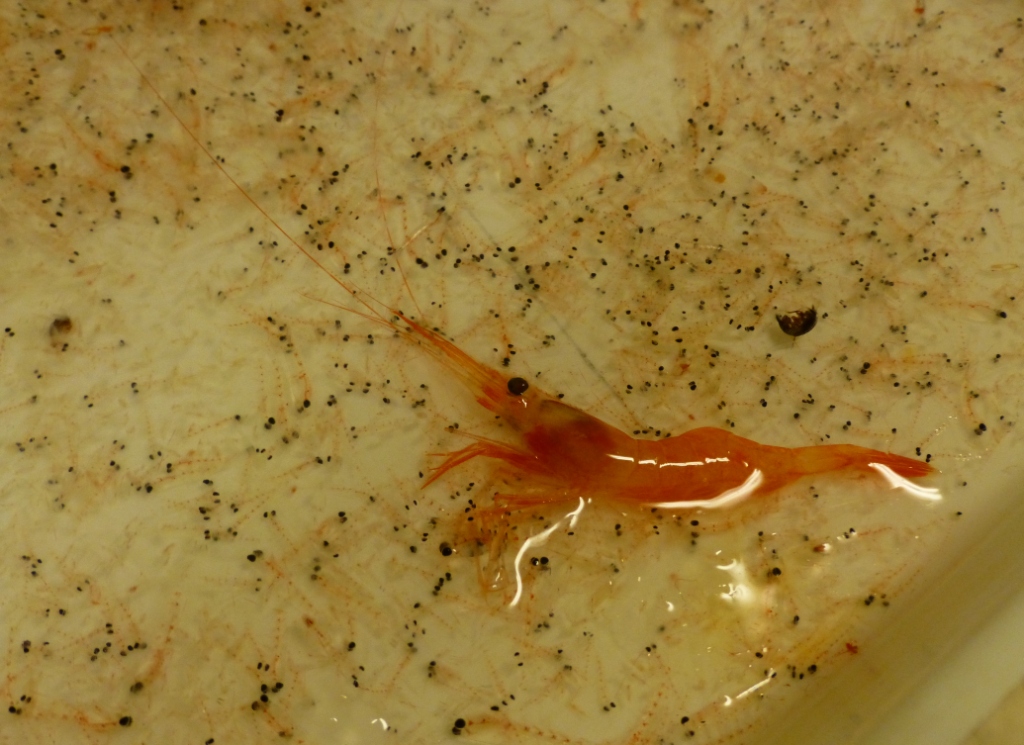
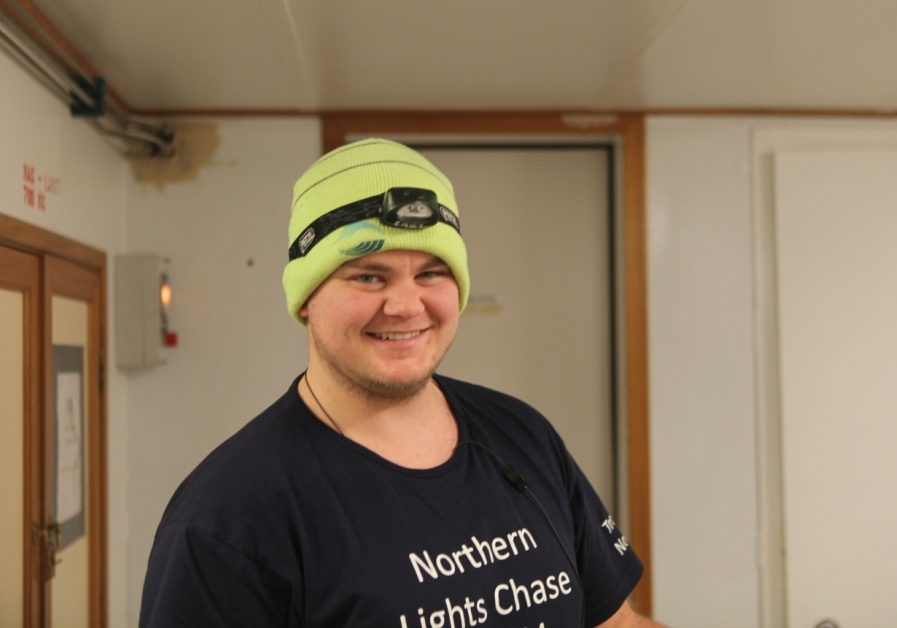




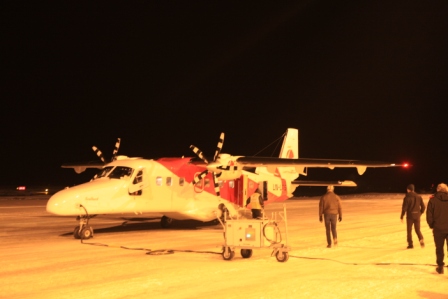
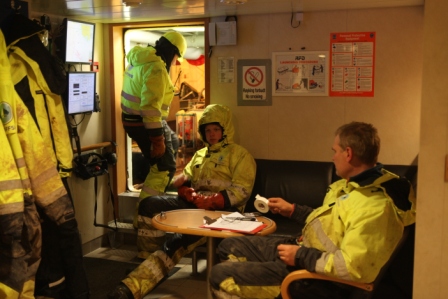
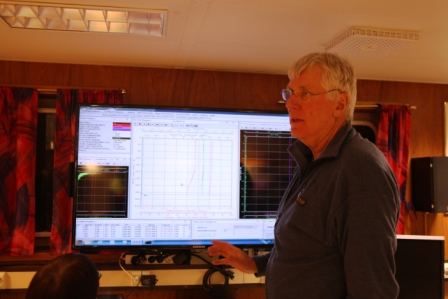
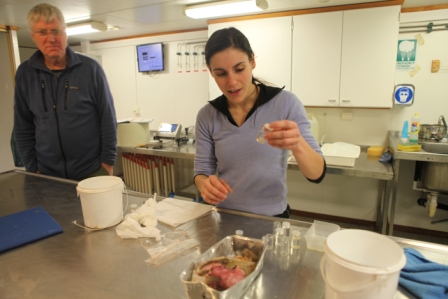
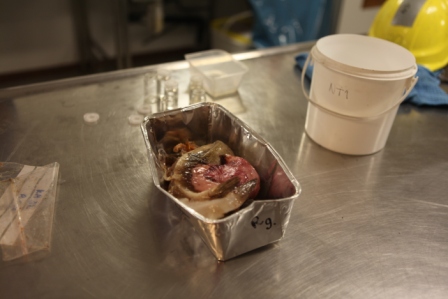

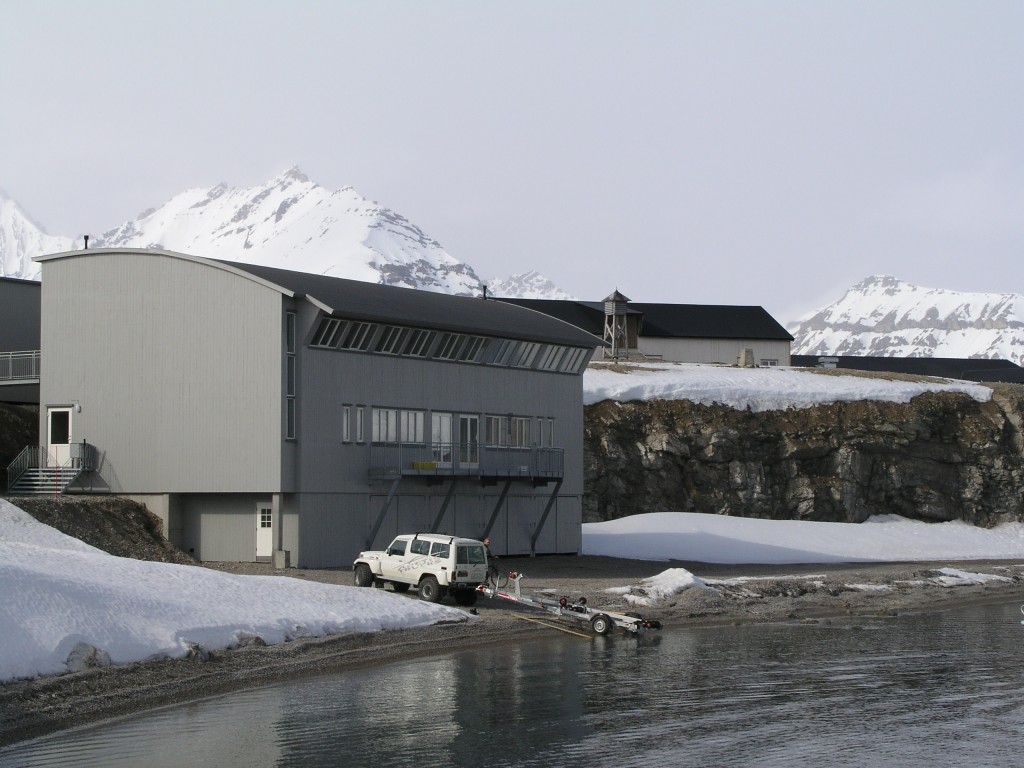

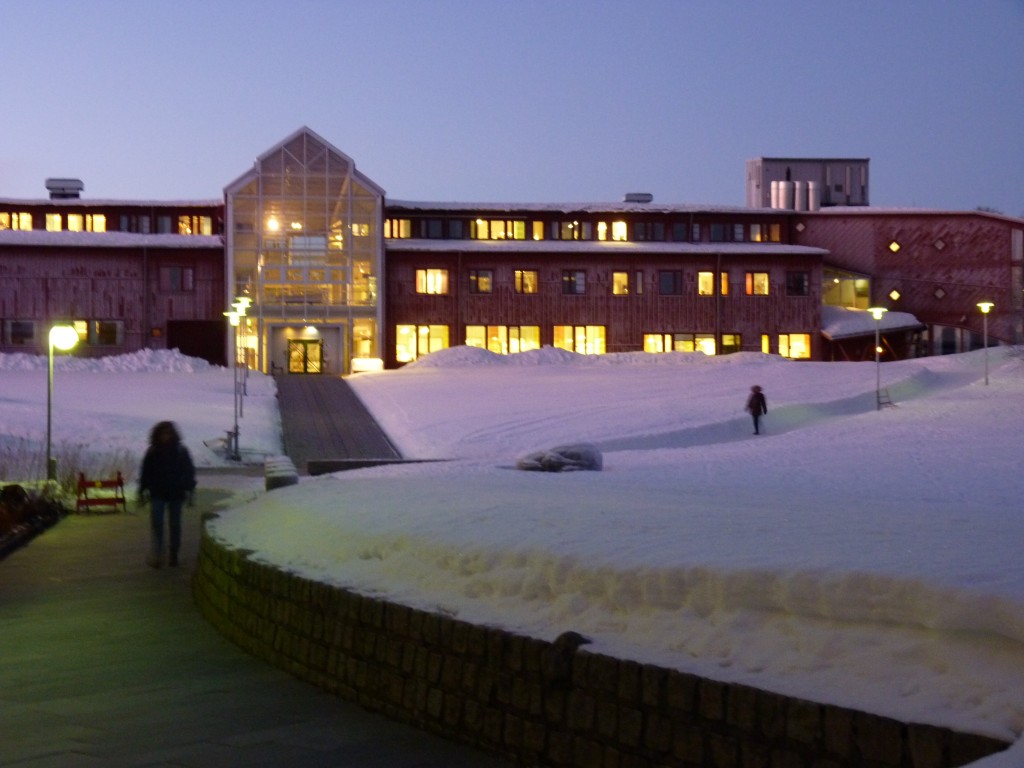













Feedback